
Kilverstone Latin American Wildlife Park (sometimes known as Kilverstone New World Zoo)
was opened on April 1st 1973 by the comedian Frank Muir.


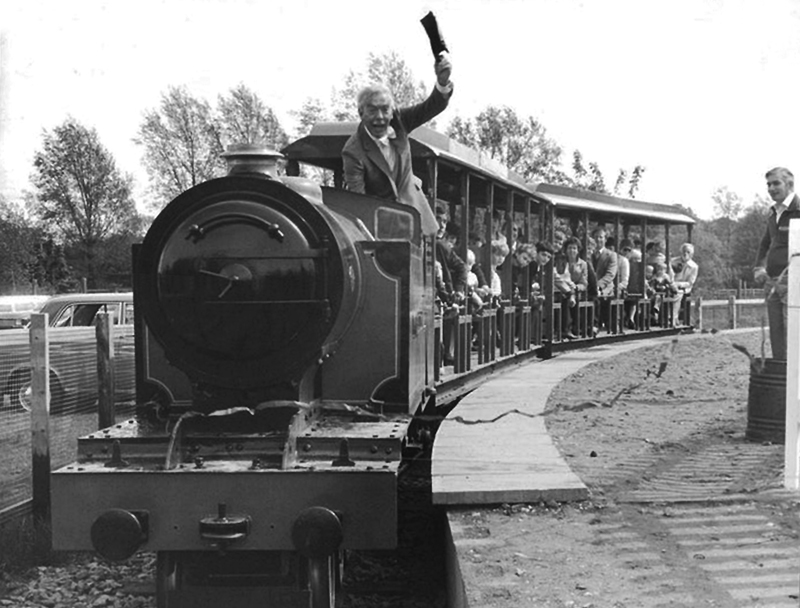
He returned in May 1982 to open the Kilverstone Wildlife Park railway.
Photos: Eastern Daily Press
Set in the sprawling grounds of Kilverstone Hall in Norfolk, the home of the late Lord John Vavasseur Fisher
and his second wife, Lady Rosamund, younger daughter of Lord Clifford of Chudleigh.


These photos show the sad last day of Kilverstone Wildlife Park - 8th September 1991.
Lord John Fisher walks back to Kilverstone Hall carrying the sign he has just sawn down, marking the end.
Accompanying him is his wife Lady Rosamund Fisher with two of their famous Falabella Miniature horse foals.
Photos: Ian Swift
Below is the story of Kilverstone Wildlife Park.
The estate dates back to the time of Edward the Confessor and became the property of William the Conqueror after the Battle of Hastings. It remained in the property of the Crown until Henry 1 gave it to William de Albany who presented it to the Priory of Monks in Thetford and the house was known as Monks Hall for many years.
After the Dissolution of the Monasteries (1536 – 39) by Henry V111 Thomas Wright bought the Manor of Kilverstone and the adjoining Manor of Coxford in 1585 and in 1620 he built the original Hall on the site of the older Monks Hall.
Mr Vavasseur bought Kilverstone in 1895 and having no heir he left the property to Cecil, 2nd Baron Fisher, son of his friend Admiral of the Fleet Lord Fisher, with whom he had worked building and arming Britain's modern Navy.
As a midshipman, the Admiral had first gone to sea on H.M.S. Calcutta as part of the fleet blockading the Baltic Sea in 1854 during the Crimean War. Subsequently he was attached to her in many appointments up to the rank of Commodore and in 1872 when she was attached to H.M.S. Excellent, the naval gunnery school, he started the Torpedo branch.
The Board of Admiralty sold the figurehead, nameplate and many of the timbers of this fine ship to Cecil, 2nd Baron Fisher, in 1922 when she was broken up after 90 years in the Service. The figurehead was set up at the bottom of the Admiral's Walk in the flamingo garden near the boathouse.
The weather and time had rotted the beautiful teak wood from which the figurehead was carved. However it was expertly repaired.
The Calcutta was one of a class of four ships built in Bombay and she was presented to Queen Victoria by Sir Jamset Geegeegeboy, a well loved and honoured Parsee Baronet.
This unusual and very large figurehead is probably the largest in existence and it now resides at the National Museum of the Royal Navy in Portsmouth.

The Calcutta figurehead in the grounds of Kilverstone Wildlife Park - c. 1990

Written by Jan Morris, this book is a fascinating insight into the life of Admiral of the Fleet, Lord 'Jacky' Fisher, during the First World War.
Cecil, 2nd Baron Fisher, laid out the gardens, and planted one million trees on Kilverstone Estate, helped and encouraged by Lady Fisher, who was the daughter of Randal Morgan of Philadelphia. Before their marriage Lord Fisher had spent 15 years in the Indian Civil Service where his final appointment, before being invalided home, was as a Judge in the District Court at Darjeeling, the famous tea growing area just south of the Himalayas.

Kilverstone Hall 1980
Photo: Susan Eckholdt

Johnny Morris at Kilverstone Wildlife Park for the filming of TV programme 'Animal Magic'.
On July 15, 1982 television presenter Johnny Morris was at Kilverstone Wildlife Park to film Animal Magic. Here with a Capuchin monkey.

Falabella Menelek jumping at Kilverstone Hall
Photo: Archive
If you took this photo please contact us to ensure that you get a photo credit
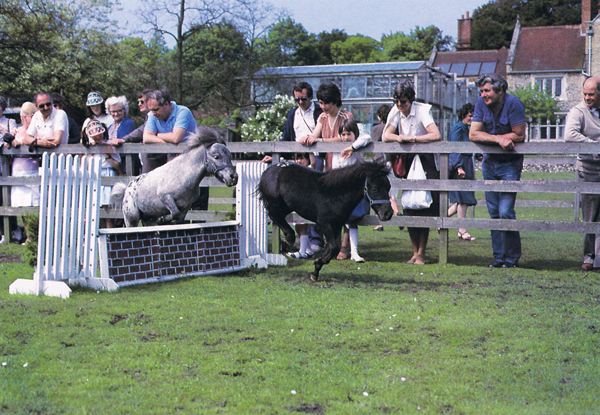
Photo: Archive
If you took this photo please contact us to ensure that you get a photo credit

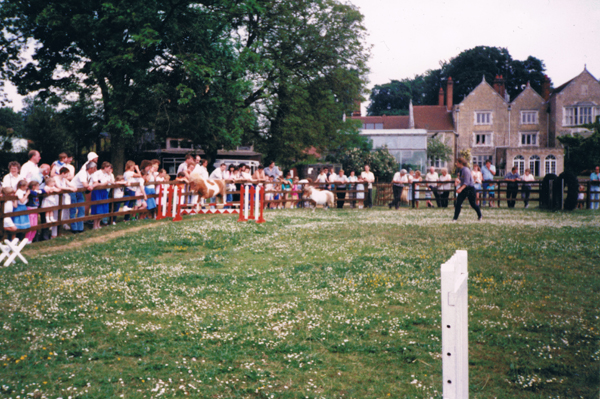
Visitors to the zoo would gather in the afternoon to watch the Falabellas perform jumping displays.
Photos: Mr and Mrs J. Shaw, courtesy Amanda Howe.

Susan Eckholdt with Falabella and other miniature horses at Kilverstone New World Zoo, spring 1982.
The spotted Falabella is Isadora of Kilverstone - the black pinto colt is Jamie of Kilverstone, second foal of Falabella Al Graten,
imported by The News of The World in 1973.
Photo: Captain Edwin Eckholdt.
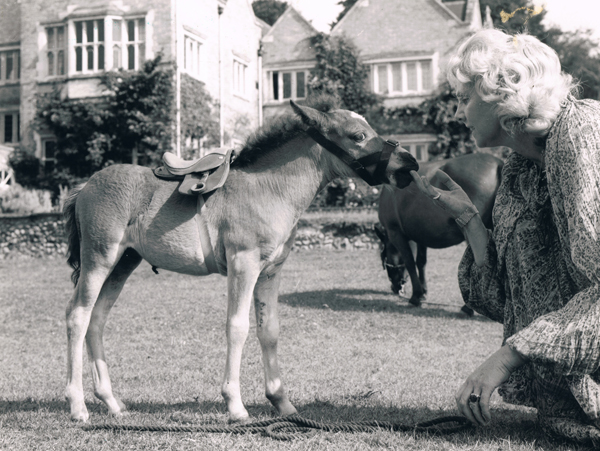
Lady Rosamund Fisher with Falabella filly Evita of Kilverstone.
(by Falabella Menelek ex Falabella Pepita)
Photo: Studio Five
Although neither of the Fishers had any special training and (as Lady Fisher put it in her memoir ‘My Jungle Babies’) only “romantic notions” about what running a zoo would involve, they decided to specialize in the wildlife of South America, a region which, they felt,
had been neglected by other establishments.
In fact Kilverstone was the only zoo outside America to specialize in Latin American Animals.

Lady Rosamund Fisher with baby spider monkey
with us at the Equuleus Falabella Stud.
Photo: Susan Eckholdt

Baby spider monkey at Kilverstone.

Large Kilverstone tea towel.

Kilverstone Wildlife Park badges

Kilverstone Wildlife Park Falabella sew-on badge
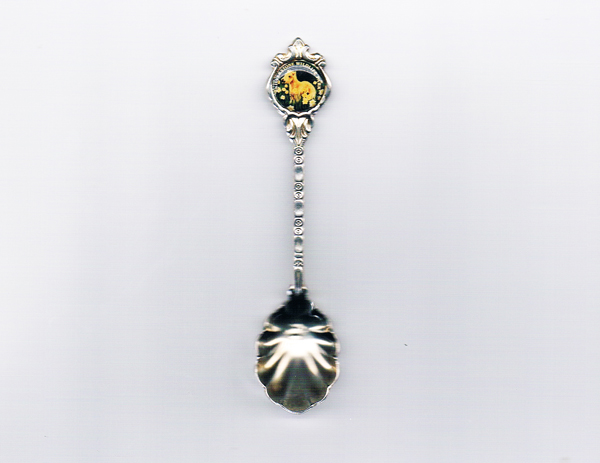
Kilverstone Wildlife Park Falabella tea spoon
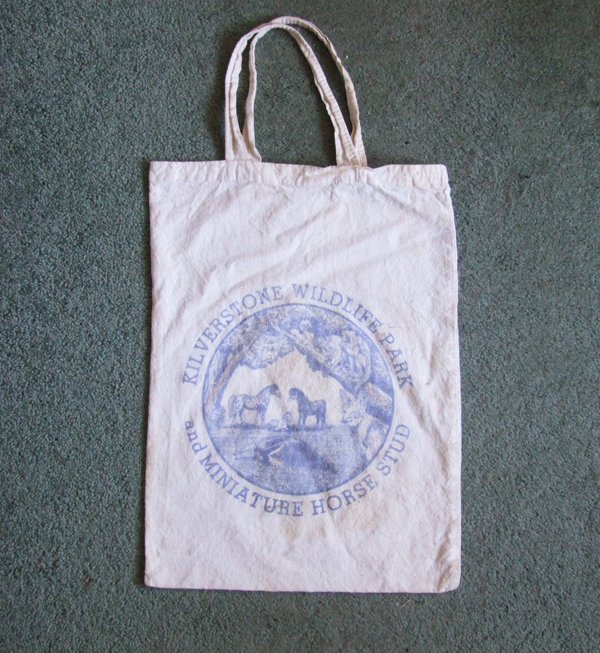
Kilverstone Wildlife Park bag


'My Jungle Babies' 1979
Rosamund Fisher's fascinating, and often humourous, story of Kilverstone New World Zoo.
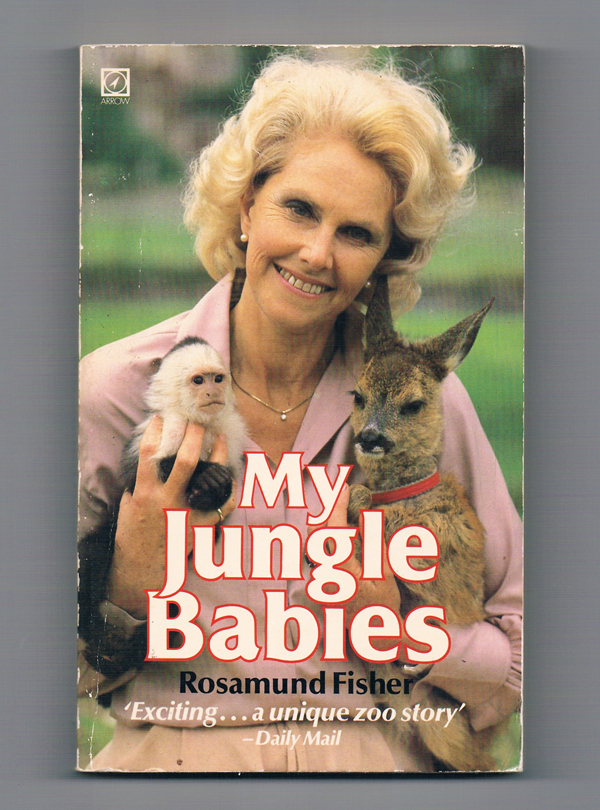
'My Jungle Babies' Re-printed 1981

Lord and Lady Fisher with Rudolph the maned wolf.
Photo: Frank Manning
Over the next 18 years the Fishers built up a collection of over 800 animals,
and established Kilverstone as an internationally recognized centre for breeding and rearing endangered species such as tamarins, spider monkeys and marmosets.
Many animals were hand-reared.
A jaguar born in 1977 was taken into the house, kept in a basket by the Fisher’s bed and even accompanied them to Royal Ascot in order not to miss its three-hourly feeds.


Baby Kinkajou and baby Squirrel Monkey at Kilverstone.
photo: Photographers International

'Happy' The Douroucouli Night Monkey at Kilverstone.
photo: Rod Williams

Baby Olingo at Kilverstone.
photo: Photographers International

Margay at Kilverstone.
photo: Rod Williams

Otters 'Slip' and 'Slide' at Kilverstone
photo: Precision Ltd.

Llamas at Kilverstone
photo: Precision Ltd.
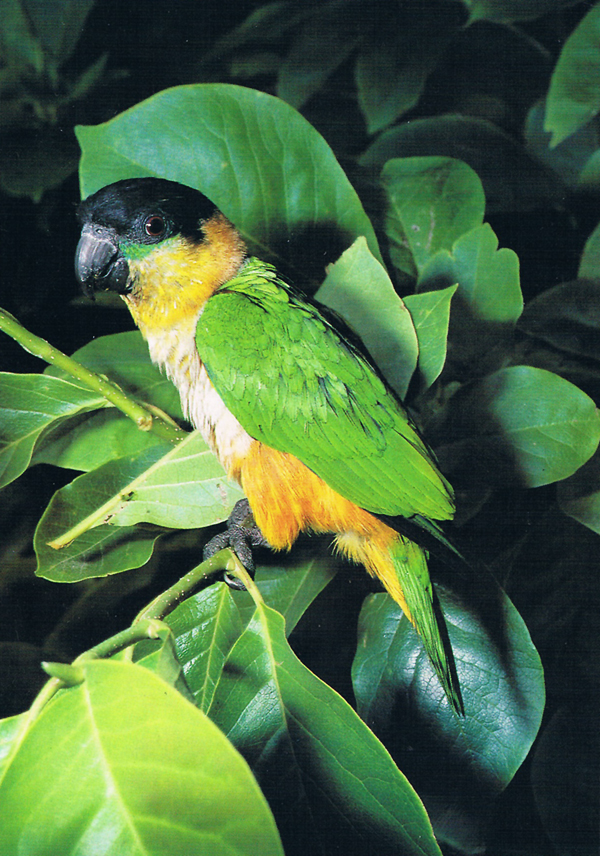
Black Headed Caique at Kilverstone
Photo: Rod Williams

Macaws at Kilverstone
Photo: Lord John Fisher
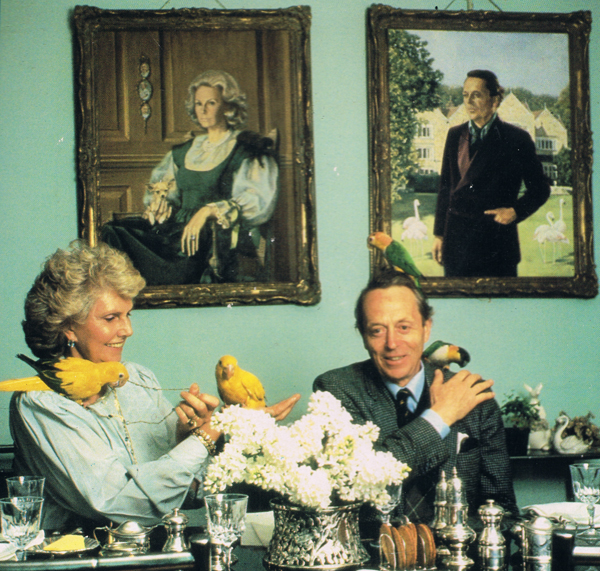
Lord and Lady Fisher also founded the Kilverstone Wildlife Charitable Trust.
Created to support the breeding and studying of Latin American fauna and their preservation.
At the height of its success the zoo attracted some 160,000 visitors a year.
The most popular animals were the Falabella miniature horses from Argentina. Lord and Lady Fisher had first purchased two Falabellas from Argentina in 1977.
Prior to their first Falabella imports, Lady Fisher had a Miniature Horse Stud at Kilverstone, based on miniature Shetland and British Spotted Pony bloodlines.

They visited Argentina the following year, selecting six from Sr Julio Cesar Falabella’s ‘La Cautiva’ ranch.
Excerpt from Lady Fisher’s memoir ‘My Jungle Babies’:-
‘Now’, said Sr Falabella, I will take you to see the spotted stallion in your photograph.’
Down the great driveway flanked by phalanxes of eucalyptus trees, he led us to yet another field. And there was Menelek, the horse from the photograph.
‘That,’ said Sr Falabella , ‘is my best horse. He has fathered all the spotted horses you have seen on the ranch.’
‘He’s the one I want,’ I said instantly, ‘I simply must have him.’.....

Falabella Menelek
Photo: courtesy Lady Rosamund Fisher
‘We spent the rest of the day choosing two other stallions and three mares to take back with Menelek. Prize Falabellas, alas, do not come cheap.’

Photo: courtesy Lady Rosamund Fisher
The Falabellas imported by the Fishers were:-
Falabella Chico (chestnut) imported 1977
Falabella Argentina (chestnut) imported 1977
Falabella Menelek (black leopard appaloosa) imported 1978
Falabella Julio Cesar (palomino) imported 1978
Falabella Carlos (chestnut pinto) imported 1978
Falabella Pepita (bright bay) imported 1978
Falabella Morenita (black snowflake appaloosa) imported 1978
Falabella Tobiana (bay pinto) imported 1978
In 1979 the Fishers borrowed a tiny Falabella mare, Falabella Al Graten, from Yorkshire on a breeding loan, returning her to her owner Helen Sutcliffe in 1981.
This little mare had been imported by 'The News of the World' and offered as the main prize in a newspaper competition.
For more information please visit the 'UK Archives' and 'Legends' and 'History' pages.
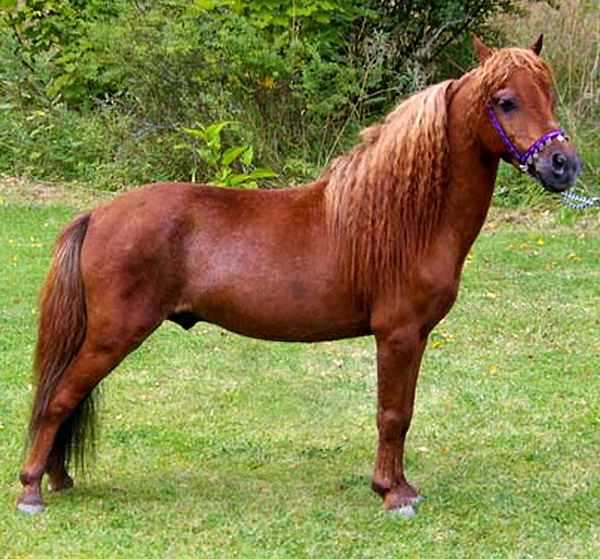
Limelight's Sabre
By Falabella Chico ex Tripoli of Kilverstone (Falabella Menelek ex Falabella Morenita)
This glorious Falabella stallion demonstrates the exquisite 'Arabian type' Falabella that could occasionally be bred from these Kilverstone bloodlines.
We are so lucky to have this horse back at the Equuleus Falabella Stud, from where he left for Sweden 'in utero' in 1992.
Owner: Rickard Rundqvist
Photo: Kristina Jaxell
The Equuleus Falabella Stud was founded on six of Lord and Lady Fisher's Argentine imports
(Menelek, Chico, Julio Cesar, Morenita, Pepita and Argentina) and the little mare Falabella Al Graten.
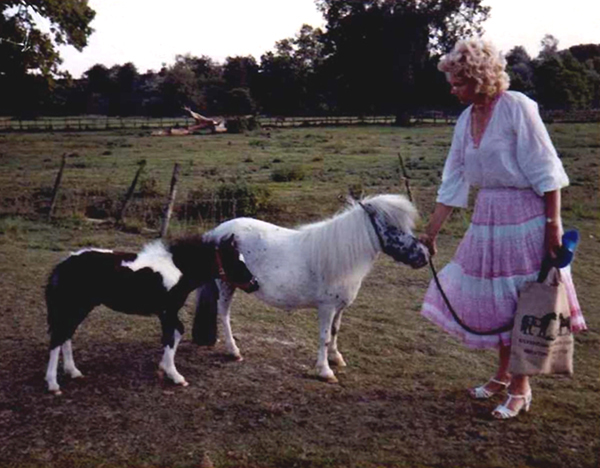
Falabella Al Graten (black pintaloosa with blue eyes) imported by ‘The News of the World’ in 1973.
Photographed at Kilverstone Zoo, during a three year breeding loan from Helen Sutcliffe in Halifax.
Pictured here with her second foal, Jamie of Kilverstone, by Falabella Menelek.
Lady Fisher was the first person to register this mare with the AMHA, giving her the name Marina.
On her return to Yorkshire Mrs Brenda Sutcliffe AMHA registered her as Bronco.
It was not until the re-enrollment required by the Mother Studbook (the Asociacion de Criadores de Caballos Falabella) in 1990
that her birth name Falabella Al Graten was discovered.
Photo: Lord John Fisher, courtesy Brenda Sutcliffe
This little mare had been offered as the main prize in a ‘The Sun’ newspaper competition.
For more information please see ‘UK Archives’ and ‘Legends’pages.

Falabella Al Graten, Supreme Champion at the first ever All Miniature Breeds Show in Doncaster.

Falabella Al Graten (pintaloosa) with her new filly (the appaloosa) Carlotta of Kilverstone at Kilverstone Zoo, spring 1980.
If you have photos of this pair in 1980 we would be interested in seeing them.
Photo: Mr and Mrs J. Shaw, courtesy Amanda Howe.

Falabella Al Graten (pintaloosa) with her new filly (the appaloosa) Carlotta of Kilverstone at Kilverstone Zoo, spring 1980.
If you have photos of this pair in 1980 we would be interested in seeing them.
Photo: Mr and Mrs J. Shaw, courtesy Amanda Howe.

Jamie of Kilverstone (by Falabella Menelek ex Falabella Al Graten)
Photo: Raymond E Chaplin

Falabella and other miniature horses at Kilverstone in 1984.
Photo: courtesy Mrs Margaret Brown.

Falabella and other miniature horses at Kilverstone c. 1980.
Photo: Susan Eckholdt.
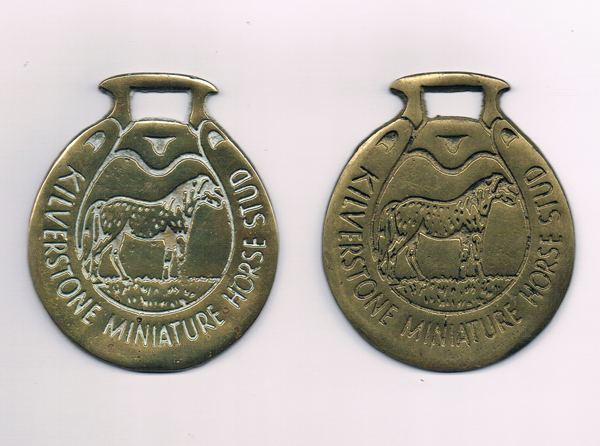
Horse brasses (depicting the famous Falabella Menelek) that were on sale at the gift shop at Kilverstone Wildlife Park.
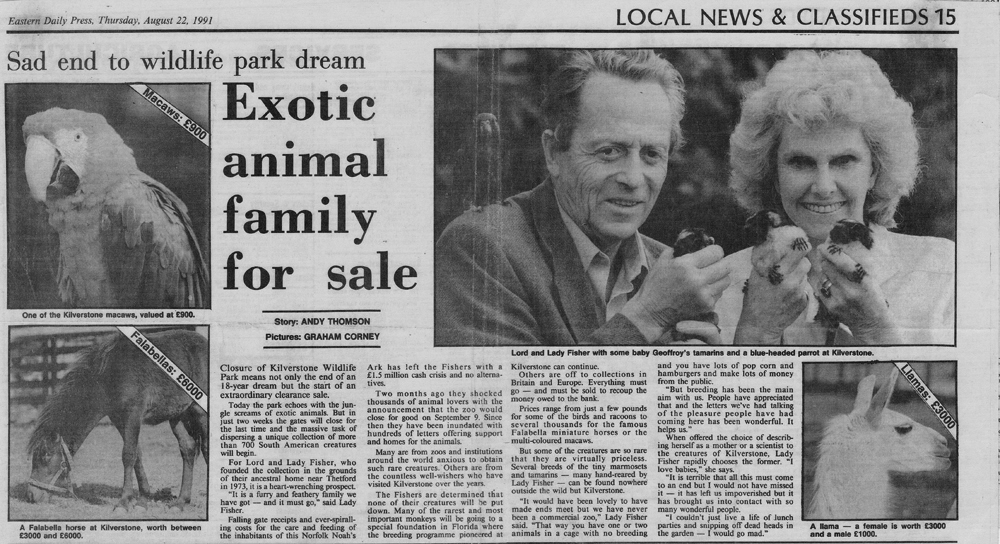
Lord and Lady Fisher sadly closed their internationally respected Kilverstone Wildlife Park after years of losses in late 1991.
The soaring costs of running a Latin-American zoo and employing 20 staff, became too great.
Lord and Lady Fisher had refused to sell their Falabella horses within the UK prior to 1991 but a few were sold at that point.

Photo: Susan Eckholdt
They went to live in Sussex, taking the remaining Falabella miniature horses and some part-bred Falabellas with them.
They continued to breed these horses, selling them around the world,
and during this time, sold two to HRH The late King Hussein of Jordan who flew in by helicopter in order to select them personally.
They sold their last horses in 1997.

The family tree of a part bred Falabella - Andrea 11 of Kilverstone, full brother to the famous Edwardo of Kilverstone,
showing the addition of Shetland blood which prevents these two horses from being Falabellas.
John Vavasseur Fisher was born on July 24th 1921. He attended Stowe and Trinity College, Cambridge.
As the grandson of the famous Admiral of the Fleet, Lord (Jacky) Fisher, who was the First Sea Lord during the First World War,
he served in motor torpedo boats during the second world war. In 1944, he was awarded the Distinguished Service Cross for action involving German E Boats.

Lord Fisher with Marcus the tapir
Photo: Studio Five, Thetford
Rosamund Fisher, the younger daughter of Lord Clifford of Chudleigh, was brought up in Devon but evacuated to Australia during the war.
There she lived on a sheep station in Victoria, married and had three children.
Returning to England, she lived in Sussex before re-marrying to John in 1970.

Lady Fisher with orphan baby spider monkey Huggy Bear
Photo: Denis Jones, London Evening News

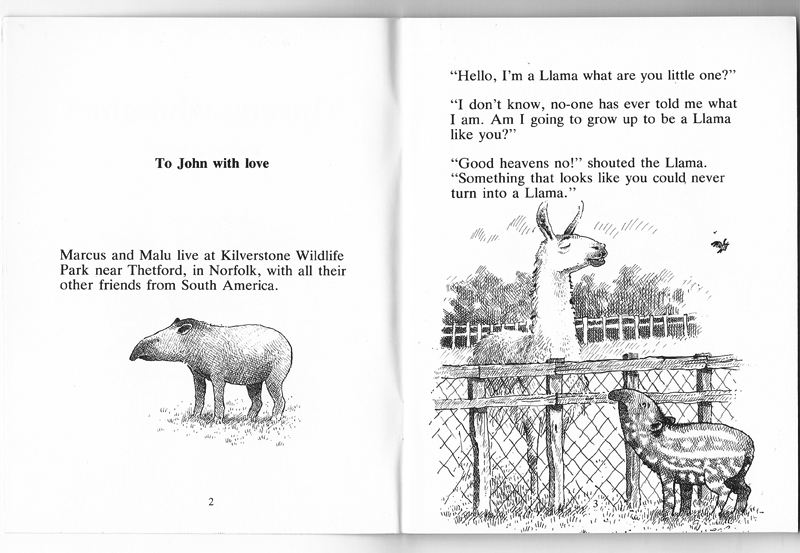
'Marcus-who-am-I'
Lady Fisher also wrote the delightful little childrens book 'Marcus-who-am-I'
With lovely illustrations by David Parkins.
Book: courtesy Lady Rosamund Fisher.
Kilverstone Miniature Railway

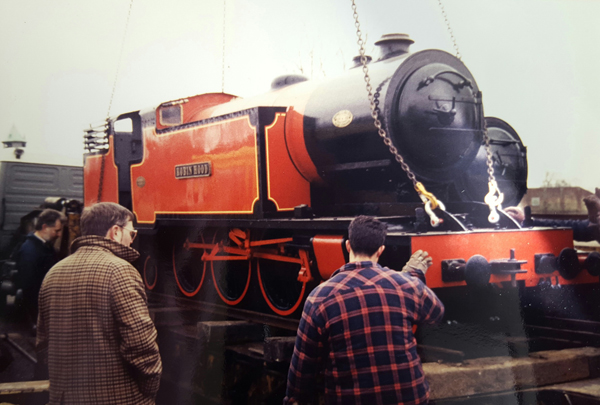

When Kilverstone Wildlife Park closed the Kilverstone Zoo Miniature Railway was auctioned off and went to Woburn.
The above photos show the locomotives being removed.
